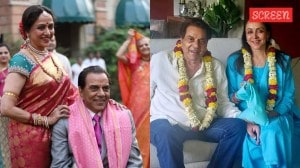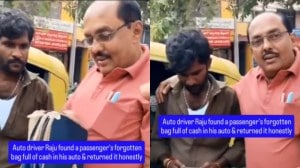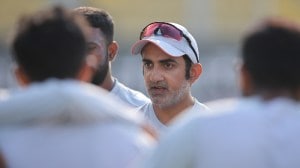How Mahatma Gandhi’s ideas of no-salt, raw food diet was a precursor to veganism
His experiments with food and fasting were as much a science as a way of life
 Gandhi had two proper meals a day, the first at 11 am the second at 6.15 pm (Credit: Wikimedia Commons)
Gandhi had two proper meals a day, the first at 11 am the second at 6.15 pm (Credit: Wikimedia Commons) “I shall content myself with merely declaring my firm conviction that…restraint in diet, both as to quantity and quality, is as essential as restraint in thought and speech,” wrote Mahatma Gandhi, as he experimented with food in his quest to find a sustainable way of living with Nature, keep Indians away from colonial impositions and ensure every man and woman was fit enough for his many marches and movements. He was not a nutritionist but in evolving a regime for himself, he tried out several concepts that have even more relevance now.
He advocated fasting to give the body a break, detoxify and repair itself. So, he would incorporate a day of fruit juice and liquid diet intermittently. His argument was once the body feels light and fit, one could focus on positive insights and be more productive. He fasted to activate the process of autophagy, which helps prevent various ailments and is today being recommended as intermittent fasting. He followed a plant-based, no-salt, largely lactose-free and sometimes a raw food diet that’s a precursor to veganism as we know it. The Gandhian way of life is also about being physically active and walking as much in the open air as possible. Doing rhythmic breathing with the help of pranayama, resting between intense physical schedules, breathing right and sleeping in a clean place under the open sky are virtues that many lifestyle coaches are advising.
Yet what we call a Gandhian diet is more conceptual than definitive. Says food historian Pushpesh Pant, “The Gandhian Diet includes both what the Mahatma consumed, changing the menu from time to time and what he prescribed to his compatriots. He was a vegetarian by birth but became an evangelical vegetarian only in England. His experiments with food continued in South Africa with his companion Herman Kallenbach and were inspired by what the Western naturopaths and nutritionists prescribed. What he suggested as a nutritious balanced diet for Indians also was not informed by a deep knowledge of Indian reality, poverty of farmers and regional variations in foods of different communities and social classes. He had come to India as a middle-aged man set in his ways and attached to his experiments in South Africa. He was dogmatic about his own prescriptions. Despite this, his concern for a balanced diet is laudable.” And some of it has held good.
The no-salt diet: Gandhi began a salt-free diet in 1911 but resumed salt consumption in the late 1920s following his doctors’ advice. “This transition was probably easier because he was exposed to bland British food during his stay in London and would have had double refined salt. He would have probably preferred the desi khand or rock salt, which had a lower sodium concentration than table salt and had naturally occurring minerals like iron, potassium, magnesium, and calcium. Now Indians are being prescribed low salt intake to control their hypertension,” says food history researcher Madhulika Dash. He did not take sugar either, choosing sugar-rich fruits instead, mangoes being his favourite. Today, nutritionists tell us how a low-sugar, low-salt diet after 40, is good for the liver.
Raw diet: As a 24-year-old lawyer from India, who was suddenly thrown into racist and elitist attacks in South Africa, food became a tool of Gandhi’s fightback strategy. The diet, he could control, on his terms. So he rejected Western food and took up raw foods. Nico Slate, Professor of History at Carnegie Mellon University and author of Gandhi’s Search for the Perfect Diet: Eating With the World in Mind, writes: “He ‘had two tablespoonfuls of wheat, one of peas, one of rice, two of sultanas, about 20 small nuts, two oranges, and a cup of cocoa for breakfast.’ He soaked the wheat, peas, and rice overnight, but did not cook them. He took 45 minutes to eat the meal, which left him feeling ‘very bright in the morning’ but with ‘a slight headache,’” in the evening.
The science was right. Soaking wheat, rice and peas would change their molecular composition, leach out the anti-nutrients and starch and make a fibre-rich meal. But while fruits take four-and-a-half and six hours to digest, wheat and rice would not digest uncooked easily. That’s why he gave up the extreme regime and though he didn’t abandon cooked food, he tried uncooked food in many formats. There were some practical reasons too. “Chief among them was that he could carry his own food wherever he went, the nutrients could not be lost during cooking, particularly vitamin A in leafy vegetables and germinated grains. Most importantly, it would free women from the kitchen to do more constructive work for the community and expand their role in the freedom movement. He even wrote, ‘Women will be set free from the prison-house of the kitchen.’ That’s why he suggested milk (he himself had goat milk though), ghee, fruits and nuts, particularly hot milk at night for proper sleep. While travelling, he would carry butterfruit, apple, banana and at his halts, would have porridge, khichdi, pulses, simple food,” says Dash. Boiled brinjal, beetroot and radish without salt and oil were his regular satvik diet.
There was economic logic too. Gandhi felt that a raw diet could help common people save up costs of cooking food in oil and ghee. This was part of his many measures as part of the Quit India Movement in 1942. Unfortunately, the poor in India could never take to raw food because beyond the Sabarmati Ashram, they lacked access to fresh fruits and vegetables. And today, the raw food movement has become an elite obsession.
 Way of Life (Designed by Abhishek Mitra)
Way of Life (Designed by Abhishek Mitra)
Eat local, grow local: Gandhi made a conscious attempt to avoid foods that had been brought in by the British, namely potatoes and tomatoes. Instead he propagated the use of elephant’s foot or yam, which is being revived today as it lowers cholesterol, brings down inflammation, slows down ageing, regulates blood sugar, flushes out toxins, improves cognitive functioning, triggers immunity and maintains hormonal balance. He popularised the Kesri dal, which did not use tomatoes. “In fact, imli as a flavouring agent died out primarily because of the introduction of tomatoes and their comforting taste to our gravies. Besides, the butter chicken legitimised their dominance.
Disregarding criticism, Gandhi did not even eat potatoes during the Bengal famine, even though it was affordable nutrition for the poor. But the poor had it nevertheless, making potatoes such a large part of Bengali cuisine today,” says Dash. He encouraged seasonal foods and while not advocating regional cuisine as such, he did have jowar, pulses, nuts, raisins, Murtaza (sweet pulao) and other local foods where his travels took him.
Intermittent fasting: Gandhi never believed in food as enjoyment but as a source of sustenance. From his writings, it is evident that he had two proper meals a day, the first at 11 am the second at 6.15 pm. “The only thing touched by fire is water. I take in the morning and once more during the day boiling water, lemon and honey,” he wrote. That would make for a body cleanse routine and an intermittent fasting as we know it today.


- 01
- 02
- 03
- 04
- 05





























